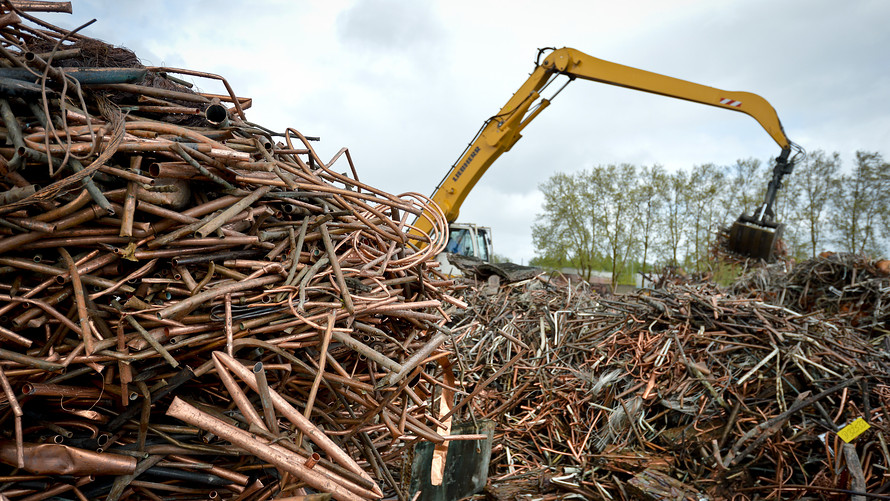
Copper, an industrial metal known as a leading indicator of economic activity, has been pointing investors toward slowing global growth, setting prices on track for their first yearly decline since 2015 and raising questions about other world markets.
“Investors are expressing economic concerns,” said Dan Denbow, a portfolio manager at USAA.
As of Thursday, futures prices for copper HGZ8, -0.85% traded roughly 17% lower year to date after a nearly 32% jump last year. They saw a settlement peak this year at $3.30 a pound in early June, but fell to a low of $2.56 by Aug. 15.
The copper price was actually up in the first six months of 2018, noted Matthew Badiali, senior research analyst at Banyan Hill Publishing. It then fell more than 20% in the span of just over two months.
The copper market has had “fewer mining disruptions this year…than anticipated, which has led to better mine production than forecast,” said Denbow. Freeport-McMoRan Inc. FCX, -1.91% is near a resolution of its dispute with the Indonesian government over its Grasberg mine. That has “lessened the market’s fear of disruption” from the world’s second-largest copper mine. Freeport and Rio Tinto RIO, -1.06% have a deal with Jakarta on ownership of the mine.
The decline in copper prices, however, also came as the “U.S. imposed tariffs on China and trade wars with…other nations began to threaten global economic growth,” Badiali said.
The trade disputes have contributed to the recent losses in global stock markets. While the impact “showed up quickly in industrial metal prices, it will have a major impact on stocks as quarterly reports come in,” he said.
Worries surrounding China’s economic health have put pressure on the Chinese stock market, pushing the Shanghai Composite Index down by more than 20% year to date, with losses of nearly 8% so far this month as of Thursday. The Dow DJIA, -1.63% dropped 608 points on Wednesday, partially in reaction to China’s problems.
“Slowing growth, particularly in China, is bad news for commodity demand,” said Badiali. “We know that this is about China because copper’s performance is matched by other base metals like lead and zinc. China is the mouth of the world, when it comes to raw materials like base metals.”
The U.S. has imposed tariffs on hundreds of billions of dollars of Chinese goods. It has “become clear that these artificially imposed taxes would cut into demand for goods from China,” said Badiali. For now, the trade war is driving the copper market, “so the short-term outlook is bearish” for the metal. That’s important given copper’s role as a barometer of future global growth.
“It could be hinting at the future resolve for the U.S. stock market,” says Adam Koos, president of Libertas Wealth Management Group. “Typically, stocks tend to correlate highly around the globe, and China [has] already seen its fair share of struggle when it comes to the equity markets.”
“The question arises: ‘Will the rest of the world take the U.S. down with them?’” he said.
The recent moves in copper, given its reputation as “Dr. Copper” for its predictive powers at turning points in the economy, suggest that investors are not very optimistic about the outlook for equities. “Tariffs are like huge tax bombs—they will either get passed on to the consumer, reducing their ability to spend, or they will hit the producers, which will drive down earnings,” Badiali said. “In this case, I believe copper prices are forecasting stocks.”
Short term, the trade war will “hit companies that couldn’t pass [tariffs] on to consumers,” he said. Longer term, “it will impact consumption.”
So far, integrated miners such as BHP Billiton Ltd. BHP, -1.01% and Rio Tinto have held up well, while shares of copper producer Southern Copper Corp. SCCO, -1.51% which has limited exposure to other metals, have fallen with the price of copper. The stock recently hit its lowest level since July 2017, Badiali said. “If copper prices stabilize, we’ll look to buy pure play copper producers that were beaten down, like Southern Copper.”
Badiali said he’s keeping watch on copper’s recent low around $2.62 a pound. “If copper prices fall back below that point, things could get ugly.”
